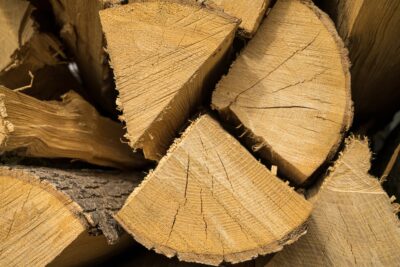
Oak Firewood: The Superior Choice for Sustainable and Efficient Heating
In the realm of firewood, the choice of wood significantly impacts the efficiency, sustainability, and overall burning experience. Among the various types of wood used for heating and cooking, oak stands out as a premier choice, particularly when compared to softer woods. This article explores the advantages of oak firewood and why it is often preferred over softwoods for various applications.
The Distinct Qualities of Oak Firewood
Oak, a hardwood, is renowned for its density, slow-burning properties, and high calorific value. These characteristics stem from its tight grain and high concentration of fibres, making it a sturdy and long-lasting wood choice. Here’s a closer look at what makes oak firewood a superior option:
1. High Energy Efficiency
Oak firewood has a higher energy content per log than softwoods. This means it burns hotter and longer, providing more consistent and efficient heat. This higher calorific value makes oak an economical choice, as less wood is required to produce the same heat as softwoods.
2. Sustainable Burning
Oak trees grow slowly, resulting in denser wood that burns more slowly and evenly. This slow-burning characteristic ensures a long-lasting fire, reducing the frequency of refuelling. The longevity of oak fires makes it a more sustainable option, as it minimizes the overall consumption of wood.
3. Low Smoke and Creosote Production
Oak firewood produces less smoke and creosote than softwoods. Creosote is a tar-like substance that can accumulate in chimneys and flues, posing a risk for chimney fires. The reduced creosote buildup with oak firewood enhances safety and eases maintenance.
4. Versatility in Use
Oak’s robustness makes it ideal for various heating and cooking needs. It’s a preferred choice for wood-burning stoves, open fires, and even for smoking food due to its ability to impart a subtle, smoky flavour.
5. Eco-Friendly Choice
Choosing oak firewood from sustainably managed forests supports environmental conservation. Oak forests are often carefully managed to balance harvesting and growth, contributing to ecological stability.
Oak versus Softwoods
While softwoods like pine and cedar are more readily available and more accessible to ignite, they fall short in several areas compared to oak. Softwoods tend to burn faster and with less heat output, requiring more frequent replenishing. They also produce more creosote and smoke, leading to increased maintenance issues and a less enjoyable burning experience.
Tips for Using Oak Firewood
- Seasoning is Key: Oak requires longer seasoning time due to its density. Ensure your oak firewood is well-seasoned (dried for at least one to two years) to maximize efficiency and reduce smoke.
- Start with Softwood: While oak is excellent for sustained burning, it’s harder to ignite. Start your fire with softer, more easily combustible wood before adding oak.
- Store Properly: Keep your oak firewood in a dry, ventilated space to maintain its low moisture content.
Conclusion Oak firewood is an exceptional choice for those seeking a sustainable, efficient, eco-friendly burning option. Its superior qualities, such as high heat output, slow-burning nature, and low smoke and creosote production, make it a preferred choice over softwoods. By choosing oak firewood, users benefit from a superior burning experience and contribute positively to environmental conservation efforts.
